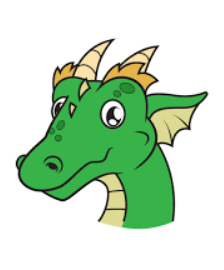Draw a dragon head in just nine easy steps! In mythology, the dragon is a powerful mythical critter with the mystical power of passing at increased gait and breathing conflagration. dragon drawing
Beliefs about dragons vary greatly from region to region of the world. Lagunas dragon’s son tan populates Como lass versions exaggerates y Los reptiles Como Los dragons de Komodo, lass serpents, lass iguanas, Los legatos y mass! The idea of dragons appeals to young children, and people of all ages are fascinated by them.
The peculiarity of the appearance of this legendary creature and the mystery of its actual existence make this mythical creature an exciting subject to draw. The intricate details and patterns of the sin embargo make them very difficult to draw. To make it easier for you, we have created a step-by-step tutorial on how to draw a dragon, summarized in 9 easy and simple steps.
You can apply these steps to draw a realistic or animated dragon. Each step is accompanied by understandable illustrations that you can use as visual guides as you follow the instructions…
Commentaries drawing a dragon head – Allows reaching formed!
Step 1
Beginning in the center of your paper, sketch a distinctive circle form with a width more important than the measurement. This displays the top of the dragon’s peak. Bypass pushing is too tricky with your pencil when drafting. It is vital to draw with light strokes so that you can easily erase certain lines that you no longer need the outline of later. Be sure the content will be traced in the center, a horizontal and vertical line that is believed sober on the paper, and use the reference lines. The point where the two lines meet is where you should outline the dragon’s head.
Step 2: Outline the body of the dragon’s dome.
Draw the dragon’s mouth at the bottom right of the outline we drew earlier. Remember to make the line crooked near the jawline to create an illusion of sharp fangs. Release any overlapping sequences from the method by employing an eraser to save your picture.
Step 3: Outline the eye sockets of the dragon.
One of the most distinctive characteristics of dragons is their huge, bulging eyes. To create this effect, draw two downward curves at the top of the dragon’s head to delineate its substantial eye sockets, where we’ll remove the eyes in the next step.
Step 4: Following, draw the pictures and visor of the dragon.
Draw a full oval shape on the right side of the dragon’s face and a semi-oval body on its left side to create its pair of eyes. After completing the eyes, we will move on to creating the nose. Draw parallel curved lines on the muzzle. Next, shade the bottom of the nose to create an illusion of depth. Since the dragon is turned slightly to the side, its left eye will only be halfway visible, as shown in the illustration.
Step 5: Release the vast, thin trough of the dragon.
Draw two parallel vertical lines below the dragon’s jaw and another line below the back of its head. Keep in mind that the lines should curve slightly, following the natural shape of a dragon’s neck.
Step 6: Measure the fins all over the dragon’s look.
Beyond each eye socket, make the fins by removing three related tapered triangular forms. Next, draw two more similar shapes between the dragon’s eyes.
Step 7 – Following, draw a couple of pointed cornucopias.
Resume by removing two short, pointy cornets at the awning of the dragon’s skull. Be sure to bend the funnels to complete them and scrutinize narrowly hung around.
Step 8: Following, remove the other ears of the dragon.
Dragons are also mainly known for their unique ears with a structure quite similar to bat wings. Drawing the dragon’s ears is a lot easier than you think! Draw an elongated, curved shape to outline the top of the ears, and then draw connected curved lines with pointed edges at the bottom.
Step 9: Total effects and covers all over her head.
Enticing recipes on the dragon’s crown is key to counting the surface, creating it seems dimensional and lifelike, and drawing two parallel horizontal lines on each horn, working from top to bottom. Next, add circular shapes of different proportions on parts of the surface of the dragon’s skin. Subsequent, draw perpendicular strings at the underside of








